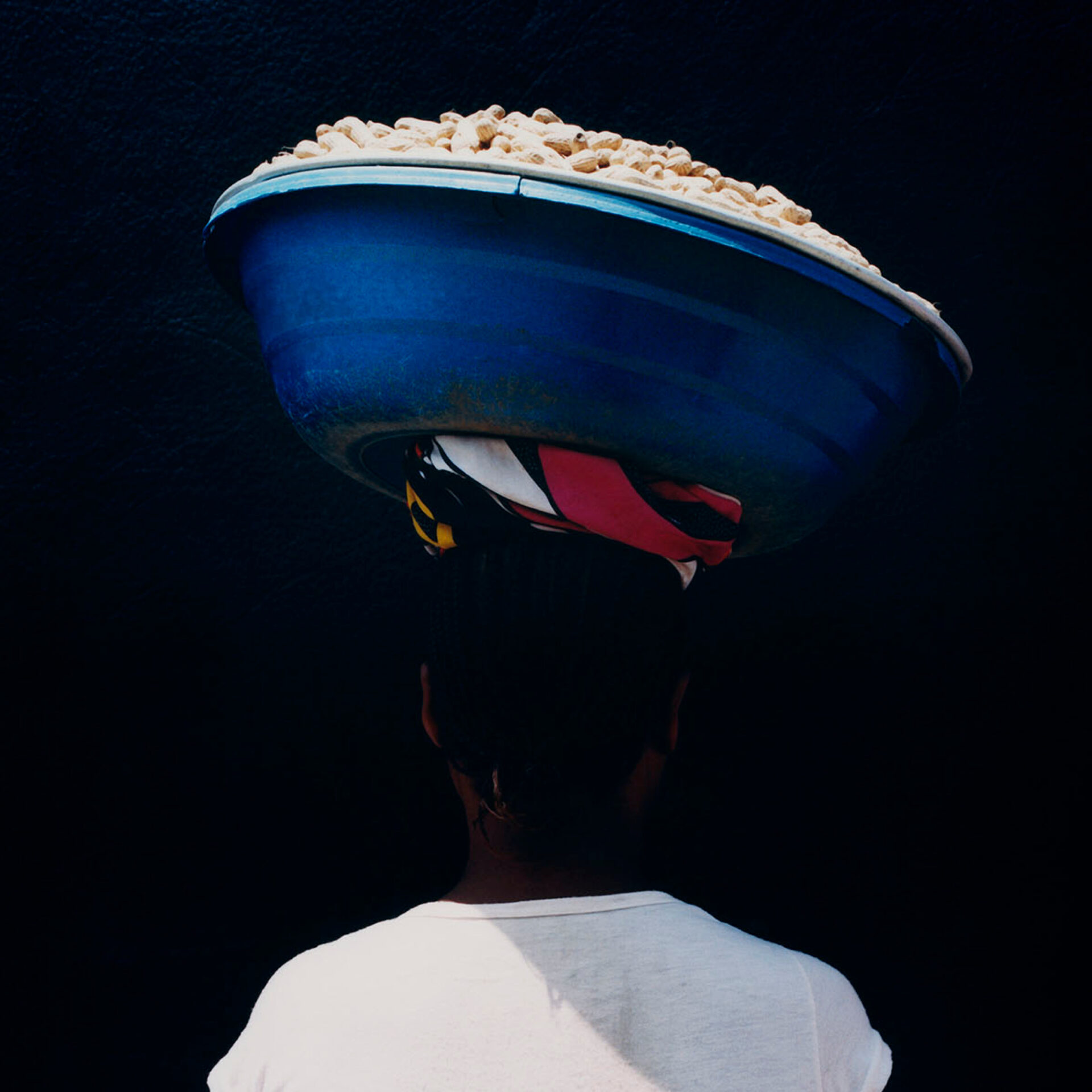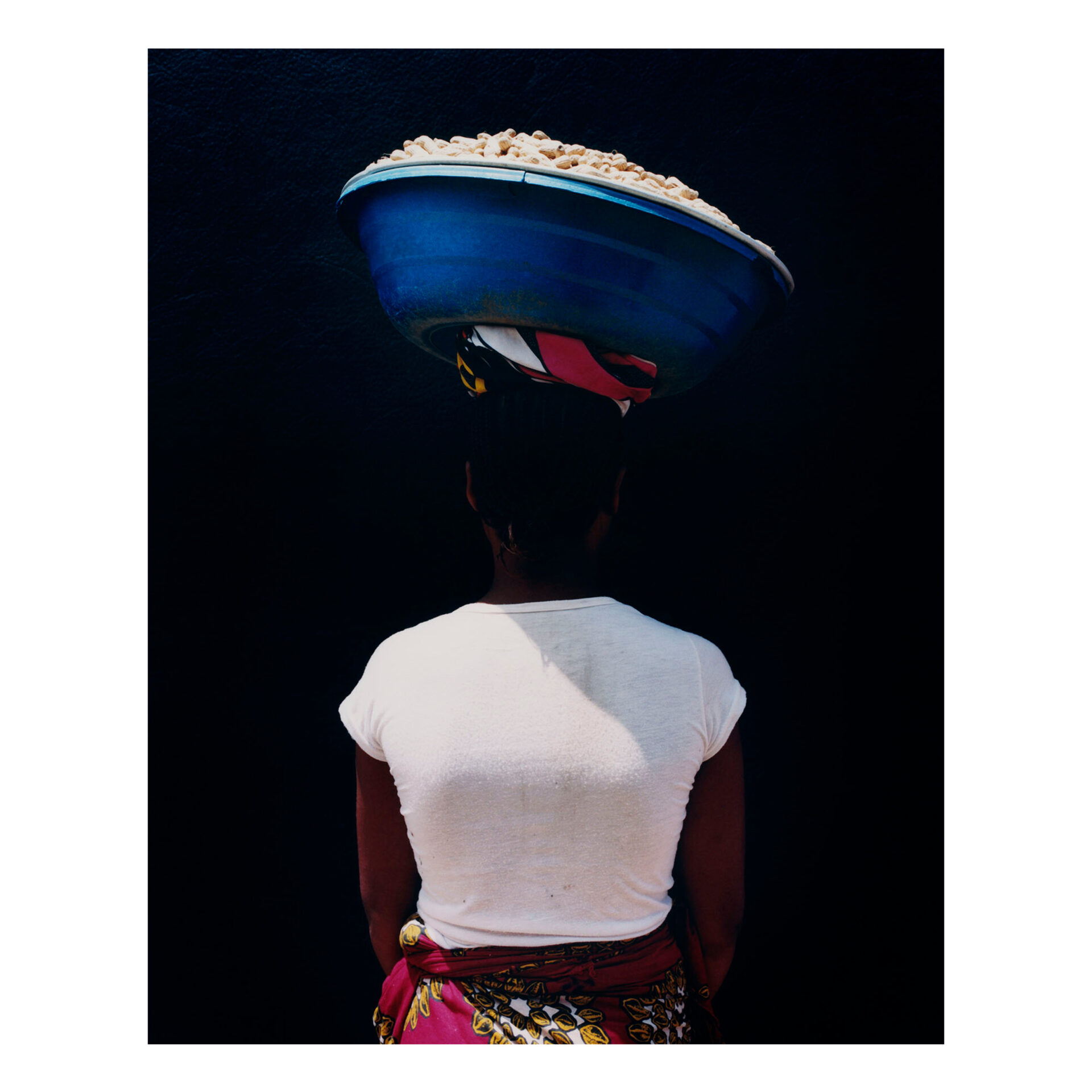Whilst on a commercial assignment in the Ivory Coast, photographer Eddie Wrey entered a small, roofed marketplace to source some props. In this market he became transfixed by the sight of laden ladies filtering effortlessly through the ordered chaos like floating sculptures. Dressed in well-worn Burberry polos, Malian burkhas, and waxes in bright and primary colours, it was as if these women had condensed full department stores into neat piles and stacked them into washing bowls. Once these bowls were skilfully balanced on top of the women’s heads, the store was open for business.
Their produce swayed from side to side but miraculously never tumbled to the ground. Bras overflowed from these bowls like a cascade of colourful hair; towers of pineapples were piled back-breakingly high; and buckets of river snails the size of cats all balanced expertly as the women weaved their way through the market. To Eddie, each new vendor seemed more amazing than the last. Whilst he went about completing the assignment he was booked on, he could hardly stop his mind from silently dreaming up a strategy to celebrate these women. By the time the commercial job had ended, he had a clear idea of how he wanted the series to look, and with that he decided to miss his flight home and travelled up to the Ivorian capital of Abidjan.
“In the heart of Abidjan lies the largest marketplace in the region, Adjamé,” Eddie tells It’s Nice That. “The market is seen by many, including those in neighbouring countries, as a land of opportunity. Ivorians, Malians, Burkinabes and Ghanaians all come to this marketplace to trade their wares. If it can’t be found in Adjamé then it most probably does not exist in West Africa.” Eddie spent a couple of days exploring the marketplace looking for a wall large enough to tape up a backdrop and set up a makeshift studio.
“The key decisions were: the colour of the backdrop, the time of day, and whether or not to show the sitters’ faces,” Eddie explains. “I chose a black piece of fabric for the backdrop as I wanted the form to show through the bright colours. I usually like to avoid shooting in the middle of the day – especially in the hot, hard African sun – but for this series it made the most practical sense. The market would be swarming with vendors and the shadowy top light would illuminate their balancing produce.”
When Eddie requested a more conventional facial portrait he came across hesitation from the women — this sense of unease from them was not something he wanted to exploit. “As a foreigner communicating through broken French and gesture, there was space for misunderstanding. A level of trust was bestowed on me and I had to respect that,” he says. So Eddie decided to photograph each woman from behind. “The decision not to show the subjects’ faces felt intuitive,” he says. “I wanted the primary focus of the images to be the breadth of produce on offer, whilst also accentuating the sculptural forms. I felt that it also gave a more global portrait of women in the region rather than focusing on individuals.”
“I also had to decide how to remunerate the women whose pictures I took,” Eddie explains. “Rather than paying cash for their time, I decided that it was a more responsible option to buy a piece of their wares at above asking price. The word quickly spread and before long I had a queue of eager participants waiting for their turn to be photographed.”
For each sitter, Eddie shot no more than one frame and a frenetic hour with his camera ensued. Then, as quickly as it had begun, the shoot was over, with each lady floating back into the chaos of the midday market. “Ultimately, my ambition was simply to celebrate the strength and agility of these powerful women, leaving the focus of the images on their wonderful and varied domestic produce,” he says. This series, which builds up a fascinating portrait of the region, certainly does just that.


